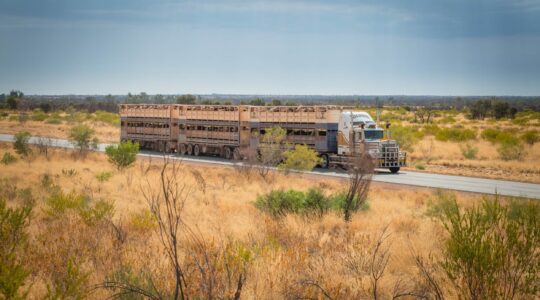Queensland business confidence is at its highest levels in more than a decade.
Business Chamber Queensland CEO Heidi Cooper said the group’s latest sentiment report showed softening inflation, infrastructure investment and political stability was buoying the state’s business community.
Ms Copper said the June quarter Pulse Report showed confidence in the future of the state economy had returned to the highest levels since the 2013 resources boom.
“Although the upward trend comes off a sustained low base, this marks the third consecutive rise in forward confidence and reflects a series of improvements in both micro and macro-economic conditions in 2025.”
She said businesses reported general conditions, capital investment and employment all improved during the June quarter, while sales and revenue were also trending up and now sitting above the 10-year average.
“But at the same time businesses continue to raise concerns about high operating expenses and labour costs as well as regulatory burden and productivity which continue to be major constraints on business growth.”
Ms Cooper said it was only the third time in more than 10 years business confidence in Queensland had been this high with businesses now backing-in the state as the place to do business long-term.
“Earlier this year our data started to show some green shoots with businesses optimistic for the future and we’re finally starting to see some of that confidence realised,” she said.
“Businesses report government spending on infrastructure, a solid commitment to state-wide benefits with the 2032 Olympic and Paralympic Games, softening interest rates boosting consumer spending, and political stability in Queensland as the main catalysts for optimism.
“Businesses are responding with confidence, increasing their capital expenditure, and hiring more people, while at the same time seeing profitability rewards.
“They are increasingly looking to future opportunities in Queensland and that forward-thinking shows in this data. They also expect the economy to continue strengthening into mid- 2026.”
Ms Cooper said while businesses were seeing confidence in the future of the state economy, expectations for the national economy were not keeping up largely because businesses were conscious of risks in the geopolitical environment.
“There is a widening gap in expectations for the state and national economies,” she said.
Key data from the June Pulse Report:
- Constraints on growth: Constraints continue to fluctuate but the most noticeable change is the severity of constraint indexes continues to lessen. Businesses reported level of business taxes and federal government charges, retaining and recruiting employees and direct wages costs were the most significant constraints.
- Confidence: While both Queensland and national business confidence are showing signs of improvement, Queensland businesses are considerably more optimistic about the state’s economic outlook. This is largely due to specific state-based factors like infrastructure spending related to the Olympics and political direction. Nationally, the recovery is more fragile.
- Business confidence for the Queensland economy is now above 50 indicating strengthening prospects for all regions across Queensland with the exception of Wide Bay, Mackay and Far North Queensland.
- The difference between the indexes continues to widen to 11.3 points and Queensland businesses continue to be more optimistic about the Queensland economy over the next 12 months than the national economy. It is the fourth highest gap ever recorded.
- General business conditions: General business conditions in the June quarter improved, up 8.5 index points to 53.1. This result reflects businesses recording increased sales and an improvement in profitability.
- Sales revenue: Total sales revenue in the June quarter also improved. The sales and revenue index of 54.2 is up 8.3 points on the March quarter index of 45.9 and is now also above the 10-year average (48.3). An index score above 50 shows Queensland businesses indicated sales grew during the June quarter. Three rate reductions across 2025 have impacted business to consumer and business to business sales for many Queensland businesses. The result is above this time last year (43.9) and anticipation of further rate reductions this year are influencing the expectations sales will continue to rise – up another 6.1 index points to 60.3.
- Operating costs: While cost pressures across leasing, insurance, electricity and fuel prices continued to moderate in the June quarter, they remained high with an index of 75.1 and above the 10-year average (72.9). However, costs again decreased another 1.1 points on the March quarter and were below this time last year (79.1).
- Labour costs: Labour costs in the June quarter remained at a similar level to the March quarter (74.1) with an index of 74.3. The index increased marginally (0.2 points) and remains above the 10- year average (66.9) but is down from this time last year (78.1).
- Profitability: Profitability improved again in the June quarter reflecting an increase in sales and revenue and a slow moderation in high operational and labour costs. The profitability index increased 10.3 points to 44.1, up on this time last year (30.5) and above the 10-year average of 36.3.
- Average selling price: Average selling prices remain sticky and increased 3.9 points to 57.7. This indicator has been consistent in a band within 4 index points for more than a year. The index is moderate and broadly in line with the longer-term trend of 56.9.
- Employment: Employment levels increased in the June quarter, with the index up 5.4 index points from 46.3 in the March Quarter to 51.7. This is the second quarterly increase and follows a period where employment levels had been marginally deteriorating.
- Capital expenditure: Improved profit levels, better sales revenue and reduced borrowing costs are continuing to impact positively on business capital expenditure. The capital expenditure index in the June quarter increased by 8.6 index points from 47.9 in the March quarter to 56.5.
Download: Business Chamber Queensland Pulse Report June Quarter 2025








